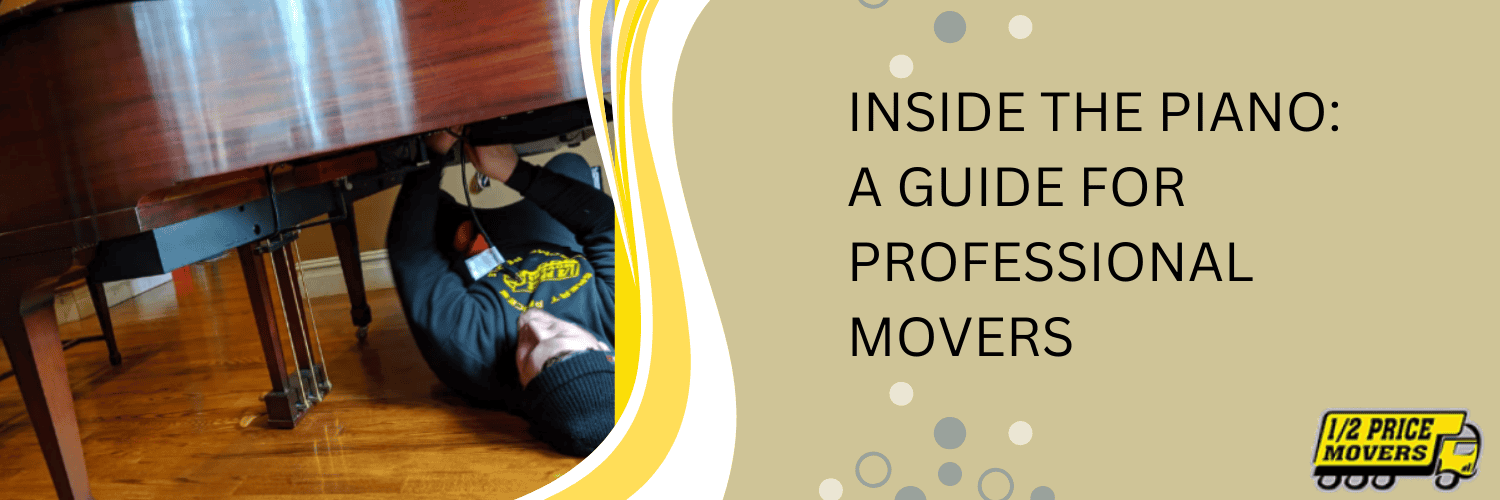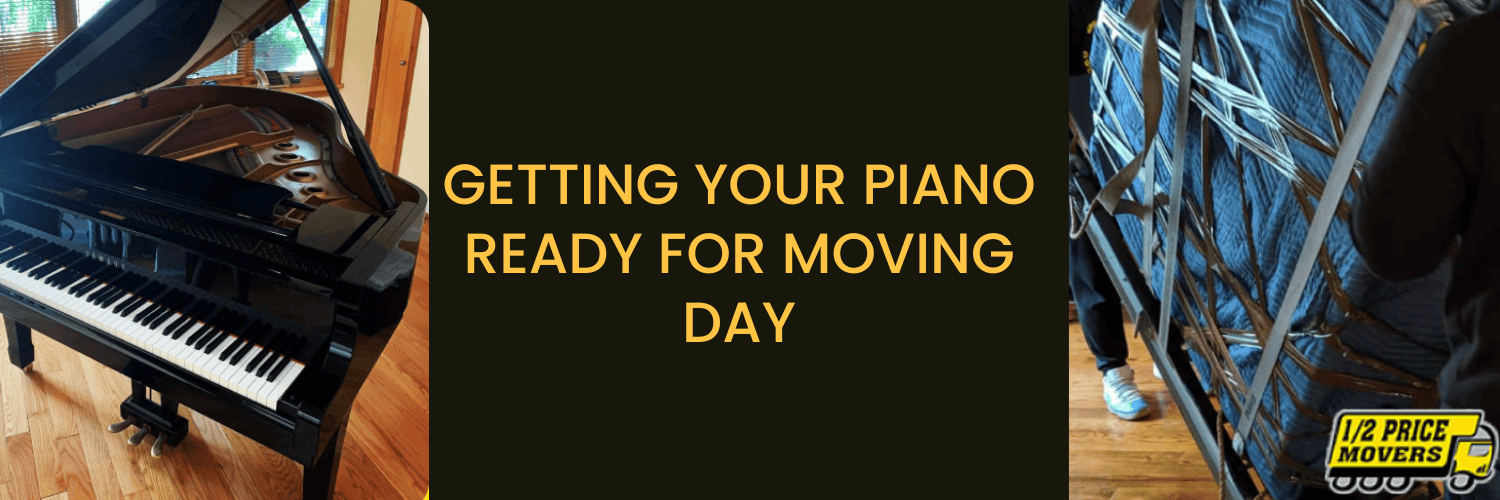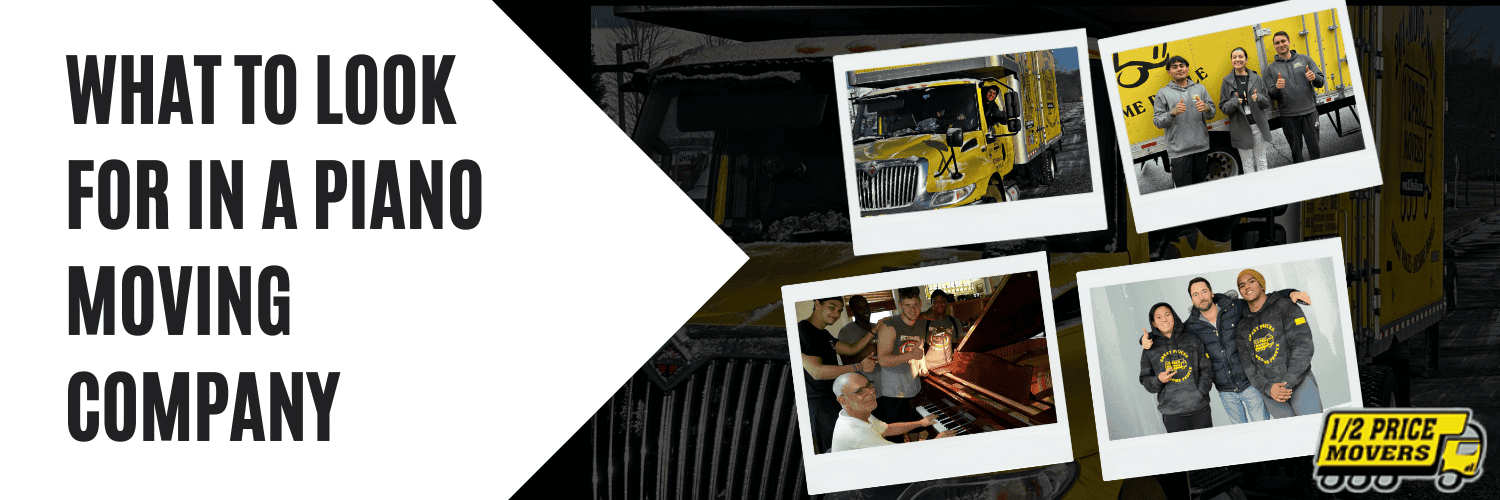Everything You Should Know About Moving a Piano Safely
To move and store a piano, be it an upright or a grand, takes more than muscle and willpower. These musical instruments, which may double as worthwhile investments and beloved family treasures, are extremely complex and fragile. Within each piano is a sophisticated set of thousands of parts, consisting of hammers, strings, dampers, keys, and pedals. Even slight mishandling during transport can disturb the internal mechanics or impair its sound quality.
Moving a piano is a process that needs utmost attention to detail. Whether hiring a professional service or doing it yourself, piano moving services are necessary to make sure the instrument is moved carefully and precisely. Due to their weight, dimensions, and delicacy, pianos need extra care when moved or stored. From suitable disassembly and wrapping protection to safe transportation and climate-controlled warehousing, every step of the process needs to be handled by a professional. Using professional piano movers eliminates a lot of potential damage and means that the instrument will be shipped or stored in the best manner possible.
Understanding the Nature of a Piano for Professional Piano Movers
Knowing how to safely relocate a piano is not just a matter of physical strength—it’s a matter of using special techniques and equipment, which is why most individuals hire the Best Movers in NYC who specialize in moving pianos. These individuals are trained to handle the instrument with the delicacy and finesse it needs.
Types of Pianos and Differences
Upright Piano |
Grand Pianos |
| Vertical design; strings and soundboard aligned vertically. | Horizontal shape; longer strings and bigger soundboard. |
| Typical sizes: Spinet, Console, Studio, Full Upright. | Models: Baby Grand, Medium Grand, Concert Grand. |
| Weight: 300–600 lbs | Weight: 500–1,200 lbs |
| Small, but still fragile weight is centered at the rear (cast iron plate & soundboard). | Shape makes them more difficult to move legs and pedals have to be taken off for transport. |

Fragile Parts
- Keys and Action Mechanism: Shock and pressure sensitive; don’t press keys or place things on them.
- Soundboard: Thin wooden piece that resonates sound; very fragile.
- Pedals & Legs: Removable but fragile should be separately padded and wrapped.
- Finish: Highly susceptible to easy scratching; use thick padding and blankets always.
Weight Distribution and Balance
- Pianos do not have an even weight distribution.
- Uprights: back-weighted.
- Never try to move a piano by the legs or edges.
- Always lift, tilt, and carry carefully sudden shocks can injure internal components.
Team Communication & Planning
- Plan move path (door frames, tight turns, stairs) ahead of time.
- 3-4 movers for grands, 2-3 movers for uprights.
- Set specific roles: lifter, guide, strap handler, spotter.
- Communicate constantly, particularly around turns, lifts, and steps.
How to Move a Piano and Prepare It for the Move?

Preparation ranks among the most important elements in Understanding the Nature of a Piano efficiently and safely. Whether you plan to hire experienced piano movers or arrange a self-move, moving forward with proper preparations beforehand will go a long way in keeping your piano, property, and personal safety unharmed. Here are basic preparation tips which all piano owners must adhere to prior to moving:
- Measure Everything Carefully
Begin by taking measurements of your piano: height, width, and depth. Next, measure all of the areas through which it will travel during the move- doorways, stairs, hallways, elevators, and doorways. These measurements will give you an indication of any potential tight spots and whether disassembly will be necessary. - Clear the Path
Ensure that the path from the piano to the moving truck is entirely free. Clear rugs, loose cables, furniture, or anything that may be a tripping hazard or delay the movers. An open path makes the move efficient and safer. - Wrap the Piano Properly
Wrap the entire body of the piano with thick, quilted moving blankets. The blankets will safeguard the finish against scratches and dings during moving. After being wrapped, straps are used to hold the blankets in position, so they do not shift or slide off halfway through the move. Don’t use plastic wrap, since it will hold moisture and cause eventual damage to the finish and wood. - Use Proper Lifting Techniques
Never lift a piano by its legs or keyboard. Always lift from the base, using heavy-duty straps and a sturdy dolly designed for large instruments. If you’re unsure about lifting and loading properly, it’s highly recommended to contact piano moving services or experienced Brooklyn movers who specialize in handling large, delicate items like pianos. Their expertise ensures that your piano will be transported with the highest level of care and safety.
Transporting the Piano: Key Steps for Moving a Piano Safely
It is not easy to move a piano—it’s a delicate task that needs preparation, coordination, and the proper gear. Whether you are moving an upright or a grand piano, using the right procedures guarantees both the safety of the instrument and the individuals who will be handling it. Here’s How Professional Movers Ensure Safe Piano Moving Services.
- Evaluate the Piano and the Surroundings
- Obtain Proper Equipment
- Prepare the Piano for the Move
- Load the Piano onto the Truck
- Watch the Environment
- Unload and Reassemble with Care
Calculating the Cost of Moving a Piano: Getting a Piano Moving Estimate
Moving a piano cost can significantly differ based on a number of important factors. These factors are the size and type of the piano,whether that is an upright, baby grand or full concert grand piano, the distance of the move and the complexity of the pick-up and drop-off points of the route taken. The moving plan and price can be affected by whether there are steep staircases to navigate, narrow hallways, multi-story buildings, or whether the piano needs to be hoisted in through a window. Even the costs of moving a piano over certain types of grades or surfaces in your entryway may affect the overall moving plan and price.
Because there are so many factors involved, it is advisable to not only avoid basing it all on rough estimates. Rather, it is advisable to hire seasoned experts who deal with piano moving services. Reliable movers in Staten Island, New York, and Brooklyn and Queens, respectively, tend to offer comprehensive, no-obligation consultations to evaluate your specific case. These evaluations enable them to provide precise pricing, define precisely what services are covered (i.e., disassembly, padding, hoisting, or climate-controlled transport), and provide you with reassurance that your instrument is in skilled hands.
Securing quotes from several providers, however, is also a wise method of getting competitive prices without compromising on service quality. Having an idea of the actual cost of moving a piano based on your particular needs can guide you to prepare ahead of time, prevent unbudgeted charges, and safeguard your precious instrument during transit.
Unpacking and Reacclimating Your Piano
After the piano is relocated or taken out of storage, it requires a period to acclimate to the new setting. Do not have the piano tuned right away. Rather, provide it with time to acclimate for two to three weeks, then book an appointment for a tuning. Sudden humidification changes and temperature variations can affect tuning and move internal parts, so it is advisable to allow the piano time to settle before adjustments are made.
Once your piano has reached its destination either a local move or long-term storage meticulous unpacking and reclamation are essential to maintaining sound quality and structural integrity.
- Step 1: Professional Unpacking
If you’ve hired experienced piano movers, they’ll handle the unpacking process with care, using specialized tools and techniques to safely remove protective padding, straps, and coverings. Pianos should never be dragged or tilted excessively, especially grand pianos, which have delicate legs and internal components that can be damaged easily. - Step 2: Placement Matters
Position your piano away from direct sunlight, heating ducts, fireplaces, or outside walls. These locations can provide temperature and humidity fluctuations that are detrimental to the wood and tuning stability of the piano. The most desirable indoor climate is perfect for sustaining the health of the piano. - Step 3: Allow Time to Acclimate
Once relocated, your piano takes two to three weeks to adjust to its new setting. Be it a minor change in humidity levels or more extreme changes in temperature, the wooden soundboard of the piano and internal mechanisms need time to settle. Early tuning is not advisable, as fluctuations in environmental factors can cause strings and components to shift, rendering early tuning useless. - Step 4: Have a Post-Move Tuning
After the piano has acclimated, it is time to schedule a professional tuning. Professional piano movers and tuners typically recommend this procedure after the acclimation process for optimal results. A timely tuning guarantees pitch accuracy and maintains the rich sound you want from your instrument.
Choosing the Right Moving Company

If hiring experts, search for companies with piano-moving experience. Movers in Staten Island, Brooklyn, and Queens usually advertise piano moving as a specialty service. Search for businesses that:
- Provide clear pricing and free estimates
- Are insured and licensed
- Have good reviews and testimonials
- Employ appropriate moving equipment and techniques
Steer clear of companies that handle pianos as ordinary furniture. A professional mover will be keen to ask in-depth questions regarding your piano and the design of your house before giving a quote.
Conclusion
If done with care and detailed consideration, task is hard, but very possible. If you use professionals or take on the work yourself, by following closely the steps outlined here, you can help protect your investment while keeping both the sound and physical structure of your piano intact. With the right movers, good quality equipment, and careful preparation of the piano for storage, you can keep it producing beautiful music for years to come.
If you’re in New York City, you might want to hire local professionals who are experienced in piano moving. Brooklyn, Queens, and Staten Island movers tend to offer specialized services that are specifically tailored to piano owners. Always ask for a piano moving estimate and hire professionals who care about your piano as much as you do.
Call us now at (718) 689-0556 or fill out the form if you have a question. We’re with you every step of the way for friendly service, fair pricing, and effective results.

